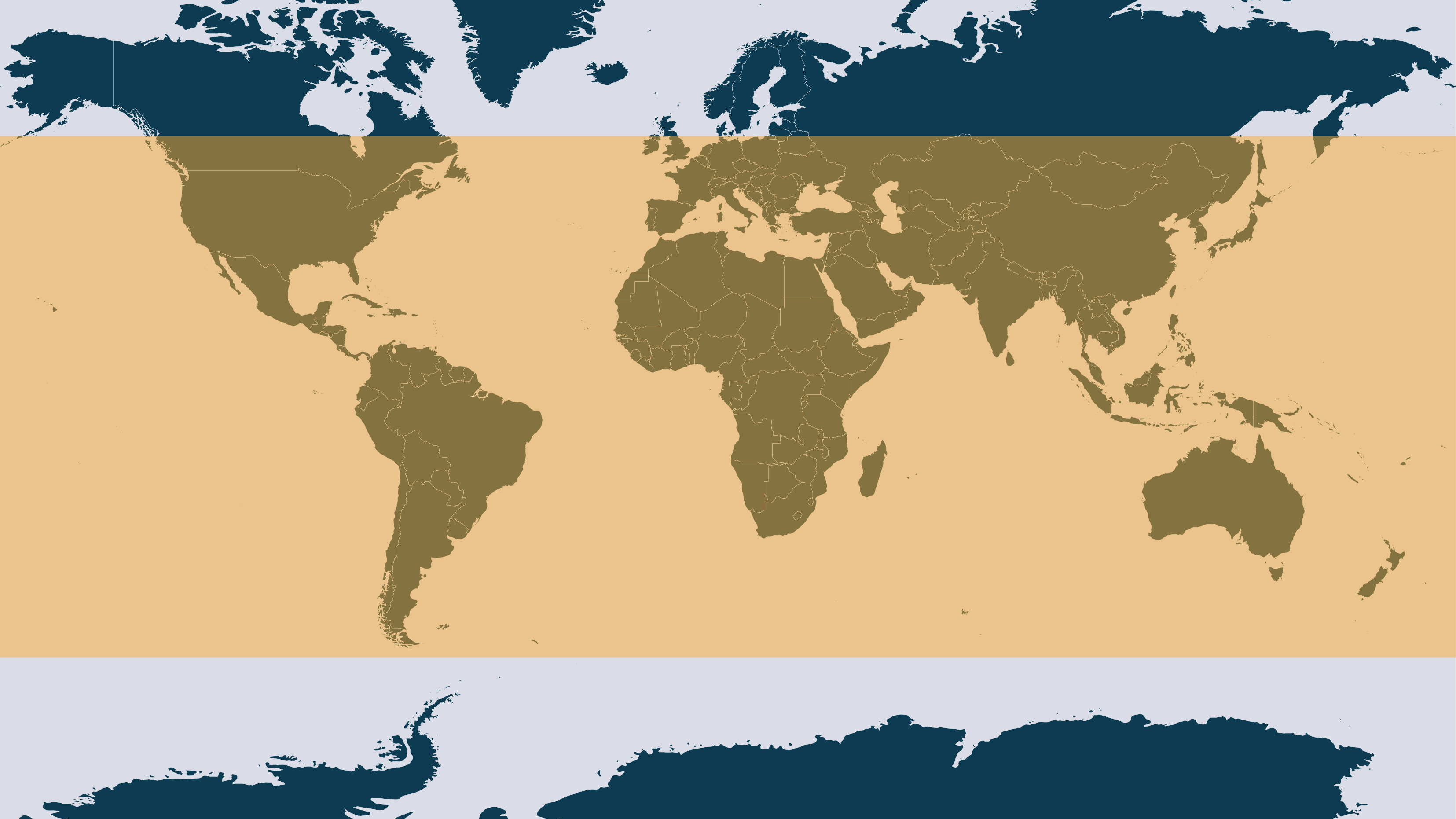Failed Soviet spacecraft Kosmos 482 could crash to Earth this week — here's where it might hit (map)
Where will the failed Soviet spacecraft Kosmos 482 land when it crashes back to Earth in the coming week? Most major cities are in the potential crash zone — but the odds of a direct strike are extremely slim.

A failed Soviet spacecraft that was mistakenly trapped in Earth orbit more than 50 years ago is expected to finally crash back to our planet this week.
Experts predict that the spacecraft, called the Kosmos 482 Descent Craft, will make its final, fiery plunge through the atmosphere sometime between May 8 and May 12, traveling at an estimated speed of 150 mph (242 km/h) as it careens through the sky like a meteor. Built to withstand a trip through the dense atmosphere of Venus, the 3-foot-wide (1 meter), 1,091 pound (495 kilograms) lander is likely to stay in one piece as it falls to Earth like a cosmic cannonball.
But where will Kosmos 482 land, and are any major cities in its potential path?
Unfortunately, at the moment, nobody knows for sure where Kosmos 482 will hit — and its potential landing area covers most of the planet. Given the satellite's current orbit, it could ultimately land anywhere between 52 degrees north and 52 degrees south latitude, Marco Langbroek, a lecturer in space situational awareness at Delft Technical University in the Netherlands who discovered the lander's imminent return, wrote in a blog post. Here's what that area looks like, shown in orange on the map below:

The projected landing zone encompasses an enormous area on both sides of the equator. This broad swath includes the entire continental United States, all of South America, Africa and Australia, and most of Europe and Asia south of the Arctic Circle. (The Arctic Circle begins just above 66 degrees north latitude). Virtually every major city on Earth, from New York to London to Beijing, falls within this zone.
That sounds bad — but you shouldn't worry: The odds of the runaway Kosmos spacecraft hitting any given populated area are exceptionally slim. With roughly 71% of our planet's surface covered in water, it is overwhelmingly likely that Kosmos 482 will land in the ocean, as most pieces of deorbited space debris do.
Related: Doomed Soviet spacecraft tumbling toward Earth may already have its parachute out, new images hint
Get the world’s most fascinating discoveries delivered straight to your inbox.
The odds of the spacecraft falling directly onto your head are probably "the usual one-in-several-thousand chance" associated with falling space debris, Jonathan McDowell, an astrophysicist at the Harvard-Smithsonian Center for Astrophysics, wrote in a blog post.
Experts won't be able to narrow down Kosmos 482's potential landing zone until it actually begins its descent through the atmosphere, which is currently predicted to happen on May 10, give or take a couple days.
What is Kosmos 482?
The Kosmos 482 probe was made and launched by the U.S.S.R. in 1972 as part of the Soviet Union's Venera program to explore Venus. The program achieved success with the Venera 7 and 8 probes, which were the first two spacecraft to successfully land on Venus in 1970 and 1972, respectively.
Kosmos 482 was built as a sister probe to Venera 8. But due to a malfunction with the Soyuz rocket that lofted Kosmos 482 into space, the probe failed to achieve enough velocity to reach Venus, instead settling into an elliptical orbit around Earth.
Soon after its botched launch, Kosmos 482 broke into several pieces. The probe's main body reentered Earth's atmosphere on May 5, 1981, while the Descent Craft remained in its unintended orbit for almost 53 years — until now.
Kosmos 482 is just one of more than 1.2 million pieces of space debris measuring larger than 0.4 inches (1 centimeter) in size, and one of roughly 50,000 pieces of space junk measuring more than 4 inches (10 cm), according to a recent report from the European Space Agency (ESA). Orbital collisions and uncontrolled reentries are becoming increasingly common, with "intact satellites or rocket bodies … now re-entering the Earth atmosphere on average more than three times a day," according to the ESA report.

Brandon is the space / physics editor at Live Science. With more than 20 years of editorial experience, his writing has appeared in The Washington Post, Reader's Digest, CBS.com, the Richard Dawkins Foundation website and other outlets. He holds a bachelor's degree in creative writing from the University of Arizona, with minors in journalism and media arts. His interests include black holes, asteroids and comets, and the search for extraterrestrial life.
You must confirm your public display name before commenting
Please logout and then login again, you will then be prompted to enter your display name.


